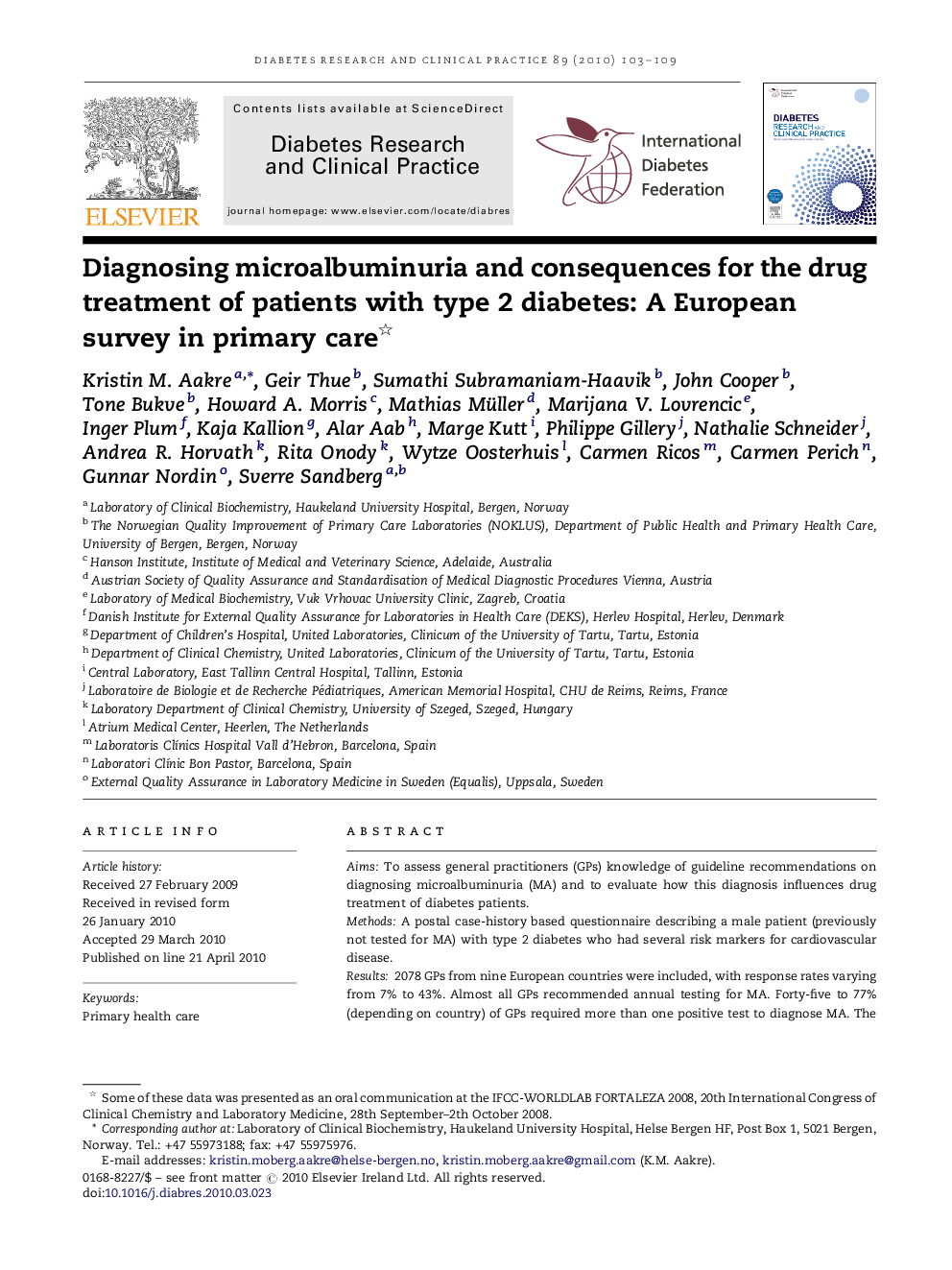| Article ID | Journal | Published Year | Pages | File Type |
|---|---|---|---|---|
| 2797499 | Diabetes Research and Clinical Practice | 2010 | 7 Pages |
AimsTo assess general practitioners (GPs) knowledge of guideline recommendations on diagnosing microalbuminuria (MA) and to evaluate how this diagnosis influences drug treatment of diabetes patients.MethodsA postal case-history based questionnaire describing a male patient (previously not tested for MA) with type 2 diabetes who had several risk markers for cardiovascular disease.Results2078 GPs from nine European countries were included, with response rates varying from 7% to 43%. Almost all GPs recommended annual testing for MA. Forty-five to 77% (depending on country) of GPs required more than one positive test to diagnose MA. The absolute increase in the percentages of GPs who would supplement the patient's drug treatment if MA developed was: for anginotensin converting enzyme inhibitors (ACEIs) or angiotensin II receptor blockers (ARBs) 23–50% (depending on country), for statins 0–19%, for acetylsalicylic acid 2–13%, and for hypoglycemic agents (tablets and insulin) 0–33%. The proportion of GPs recommending all four possible treatment modalities was low.ConclusionsGuidelines for diagnosing MA were partly followed. ACEIs and ARBs were recommended when MA was present, but the recommended multifactorial treatment of cardiovascular risk markers was not implemented.
